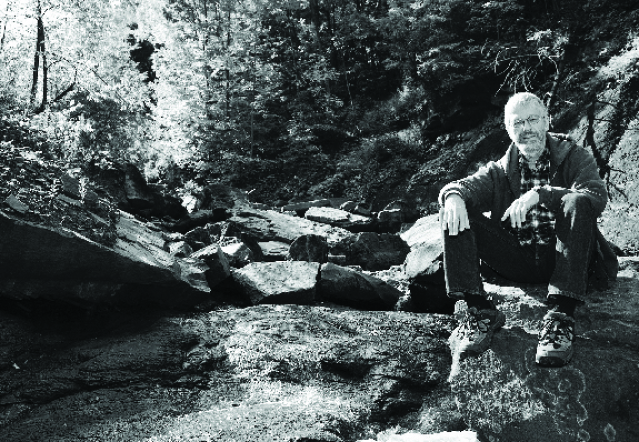What Hamilton place names intrigue, inspire or puzzle you?

John Terpstra answers, alphabetically:
Beckett’s Drive – Being aware of this name is like knowing the secret handshake that gets you in the door. It’s the name of the access road for what is also called the Queen Street Hill–between Queen Street, downtown, and Garth Street, on the mountain. It was named after the person who built it and later gave it to the city.
Chedoke – This very evocative word, or name, is also very distinctly Hamilton, and has been applied to everything from a waterfall to a highway to a hospital. But it is also an orphan. As far as I know, no one can say for sure where it originates. It is not an English word or name, nor French, and it doesn’t come from a First Nation’s language. It is likely a corruption of something, but what?
Clappisons Corners – I like all the “Corners” names. Duffs, Ryckmans and Peters are a few of the others. Clappisons stands out from the rest because it has such a hillbilly sound—and I mean that in the best way. It is hard to glamourize a name like that, regardless of how many box stores are built. I resist glamour in all its forms.
Devil’s Punch Bowl – The juxtaposition of this east end waterfall with the illuminated cross that stands beside it at the edge of the escarpment is irresistible — especially considering the falls’ name. The first time we visited the place with our kids, my young daughter looked at the cross towering above the trees and said, “Look, God’s thing.”
Hamilton – Ours is the first city in the country that was founded on real estate speculation, and I’ve never known for sure if we are called Hamilton because our land developer, George Hamilton, named the survey that he drew out on paper after himself, or because the earliest residents insisted on giving him the honour. Maybe he was a really nice, deserving guy, but either way it still feels weird.
Head-of-the-Lake – This is the earliest Euro-naming (as distinct from First Nations) for where we live, from a time when geography meant something, and I love it. It located this place for travellers by water and land. I think we missed a great opportunity at the time that amalgamation was forced, as they say, down our collective throat, when we did not rename the New City of Hamilton this. The new name may have healed some wounds, and made it seem less like the city was swallowing the surrounding towns. The rest of the country may have thought it was solely a marketing ploy geared to improve our image. It would have been that too, of course.
Jolley Cut – This is another access road built by a private individual and given to the city, under the condition that no toll ever be collected from anyone using the road. Tolls were a particular aggravation at the time. You become aware of how unusual this name sounds when you give directions to a stranger. One day, I predict, the “e” will drop away, and everyone will start thinking that this access is called the Jolly Cut because of the Santa Claus/Christmas Greetings that festoon the side of the escarpment there during December.
Mountain – I’ve said it before, I’ll say it again. Naming the Niagara Escarpment as it runs through the city the Mountain is an act of poetry. Of course we all know that it isn’t really a mountain. We’re not blind. In our early, pioneering days we took poetic license and called it that because it was so darn hard to get from the bottom to the top by horse and buggy that it could just as well have been a mountain. Development never really got going up there until reliable roads were built, mostly after WWII. So we never turned in our license. Big deal. Hamilton is not generally considered a poetic city, but maybe it should be.
Mud Street – A poetic city on the one hand, prosaic on the other. A prose-poem of honesty: if the road is muddy, we will call it muddy–forever.
Pud’s Point – Like Head-of-the-Lake, this is another case of the missed opportunity. This is what Bayfront Park should have been called. Mr. Pud (I can’t remember his full name) was a man who spent his entire life living beside and on the waters of the bay. Pud’s Point would have been a humanizing, and therefore Hamilton name, truer to our town than the generic, wish-we-were-Toronto name that was chosen.
John Terpstra’s newest book, Skin Boat – Acts of faith and other navigations (Gaspereau Press) offers frank reflection on faith and church in a secular era. His 2002 book, Falling Into Place is a creative investigation of the Iroquois Bar – a giant glacial sandbar which lies beneath one of Canada’s busiest transportation corridors.
Originally published in H Mag, issue 25 – Oct. 2009.

